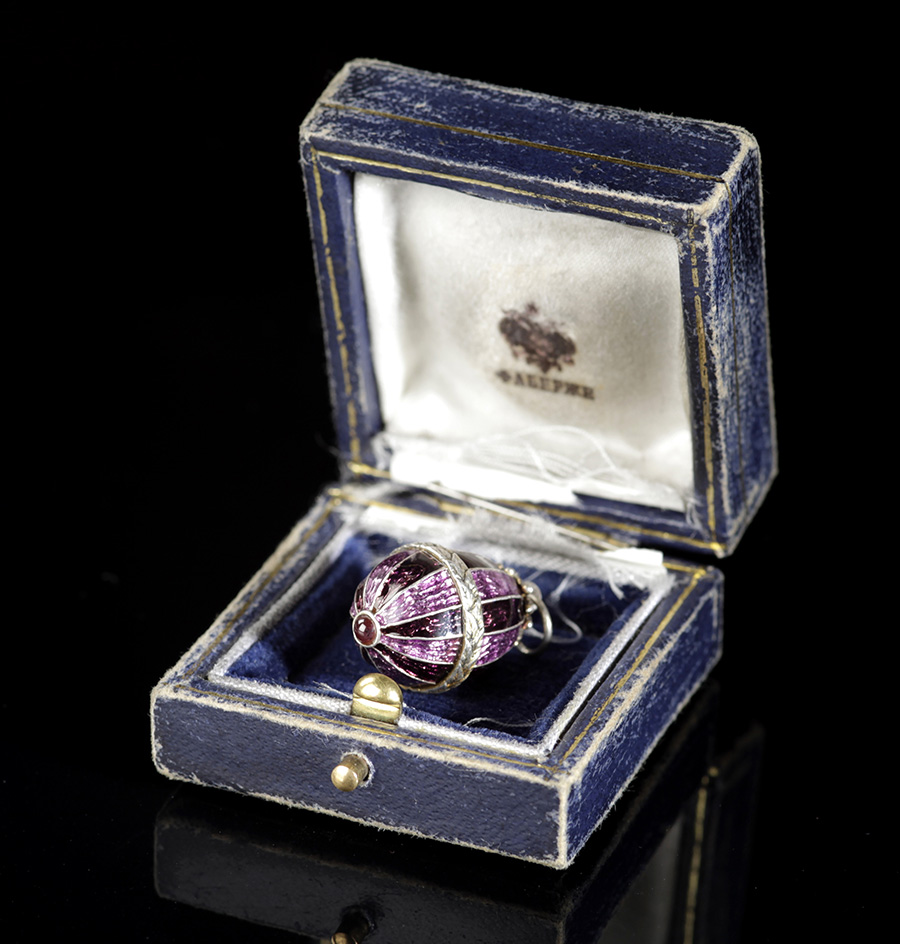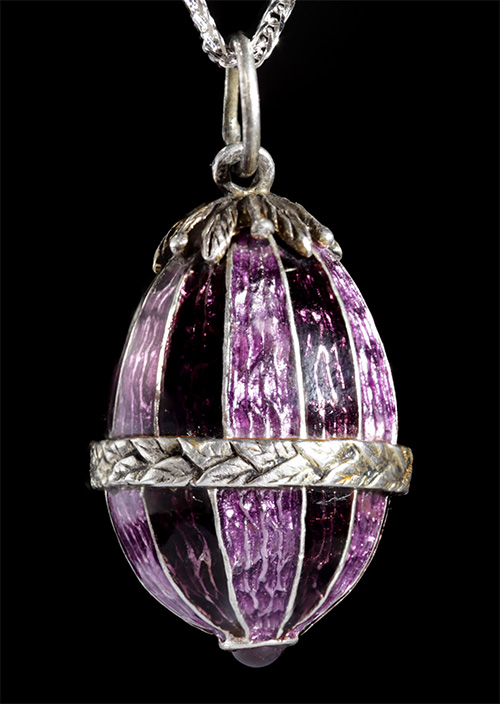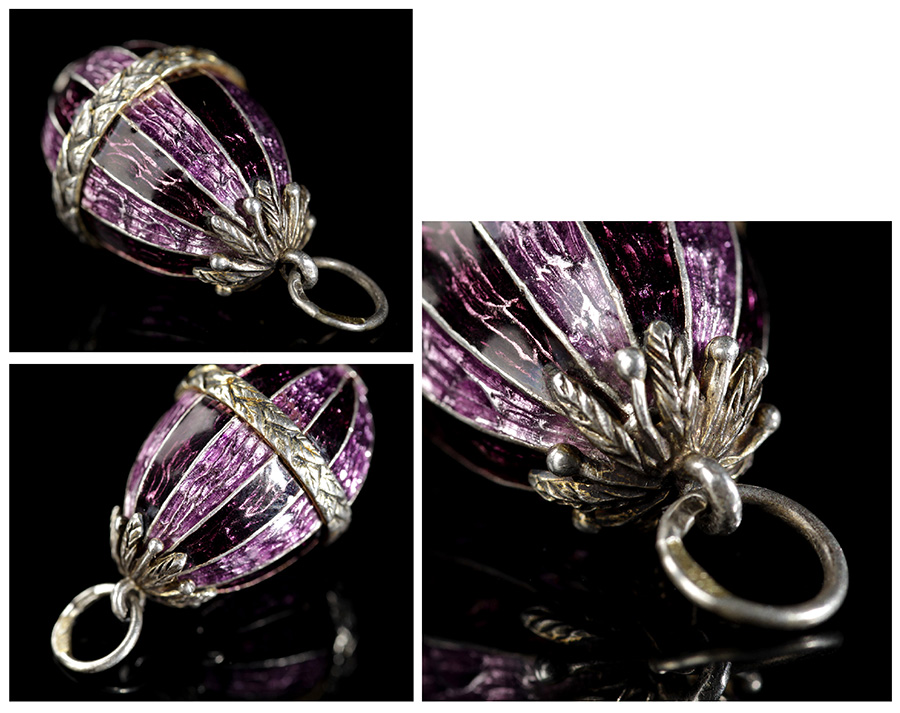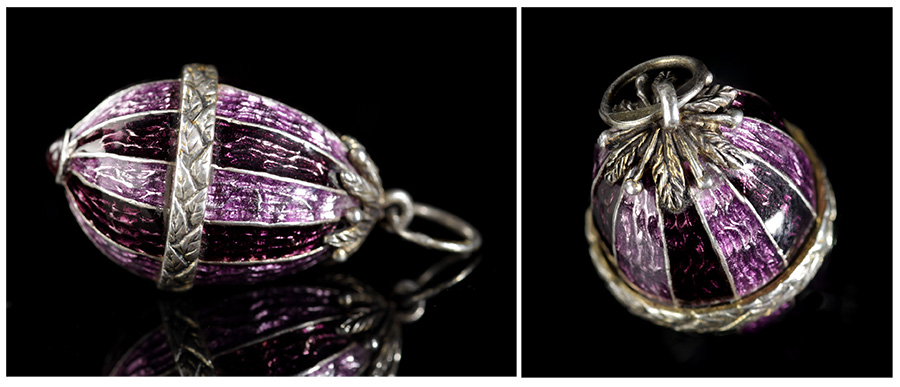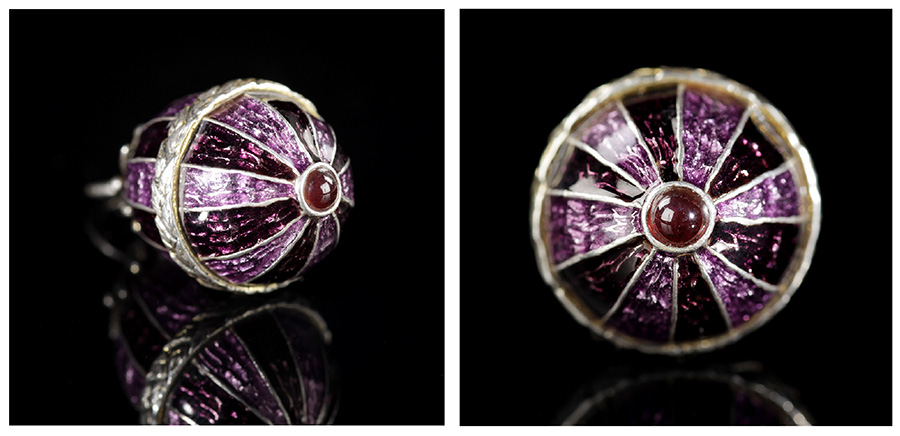PETER CARL FABERGÉ pendant (Russia, 1846 - Switzerland, 1920).
Описание
PETER CARL FABERGÉ pendant (Russia, 1846 - Switzerland, 1920).
Silver and enamel pendant, 1908-1918.
With punches.
In its original box.
Measurements: 24 mm high.
Beautiful egg-shaped pendant, made of silver and adorned with translucent enamels in two shades of violet, applied to a background worked with an irregular relief whose organic ripples are enhanced by the color of the enamel. The decoration is eminently vegetal, with a crown of leaves at medium height that already tells us about what will be the stylization of Art Deco, and a superior crown of naturalistic leaves, more closely related to Art Nouveau.
The pendant features as a law mark the so-called second Kokoshnik mark, used for marking sterling silver between 1908 and 1926 in Saint Petersburg, Moscow and Kiev. Therefore, the piece must be dated between 1908 and 1918, the latter year in which the Fabergé firm disappears, after being nationalized by the Bolsheviks.
The pendant features as a law mark the so-called second Kokoshnik mark, used for marking sterling silver between 1908 and 1926 in Saint Petersburg, Moscow and Kiev. Therefore, the piece must be dated between 1908 and 1918, the latter year in which the Fabergé firm disappears, after being nationalized by the Bolsheviks.
Russian jeweler Peter Carl Fabergé is considered one of the worlds foremost goldsmiths, being especially known for his Easter eggs commissioned by Tsar Alexander III and later by his son, Nicholas II. Born in Saint Petersburg, Fabergé trained in the family jewelery workshop, through the Grand Tour that he made in Europe from 1864 and, possibly, in the Dresden School of Arts and Crafts. On his return from his trip, he will be mentored by Hiskias Pendin, the master goldsmiths of his fathers firm, with whom he will catalog and restore the Hermitage objects during the 1870s. After Pendins death in 1882 Fabergé goes on to direct the workshop, soon achieving an enormous reputation through official exhibitions such as the Moscow Panrusa Exhibition of 1882, where he obtained the gold medal and that of Saint Stanislaus. The Tsars admiration for his work begins just now, and Fabergé will soon become the favorite jeweler of the Russian imperial court. Only three years later, in 1885, Alexander III named the firm Fabergé the official jewelery of the imperial house. In addition to making the famous Easter eggs between 1887 and 1917, Fabergé tackled a wide range of typologies, from tableware to jewelry, and in 1900 he represented Russia at the Universal Exposition in Paris, where he could not compete for be part of the jury. However, the firm was forced to close with the outbreak of the October Revolution, which was nationalized by the Bolsheviks. Works by Fabergé are currently kept in the most prominent museums around the world, including the Metropolitan in New York and the Royal Collection in London.
Цена
*Вы должны быть зарегистрированы, чтобы увидеть цену этого товара.
 РЕГИСТРАЦИЯ С WHATSAPP
РЕГИСТРАЦИЯ С WHATSAPP* Если вы не хотите регистрироваться, вы можете позвонить нам по адресу 659 053 479 за дополнительной информацией.
 НАЦИОНАЛЬНАЯ И Международная доставка застрахованы до вашего дома. БЕСПЛАТНО в Андалусии
НАЦИОНАЛЬНАЯ И Международная доставка застрахованы до вашего дома. БЕСПЛАТНО в Андалусии 






